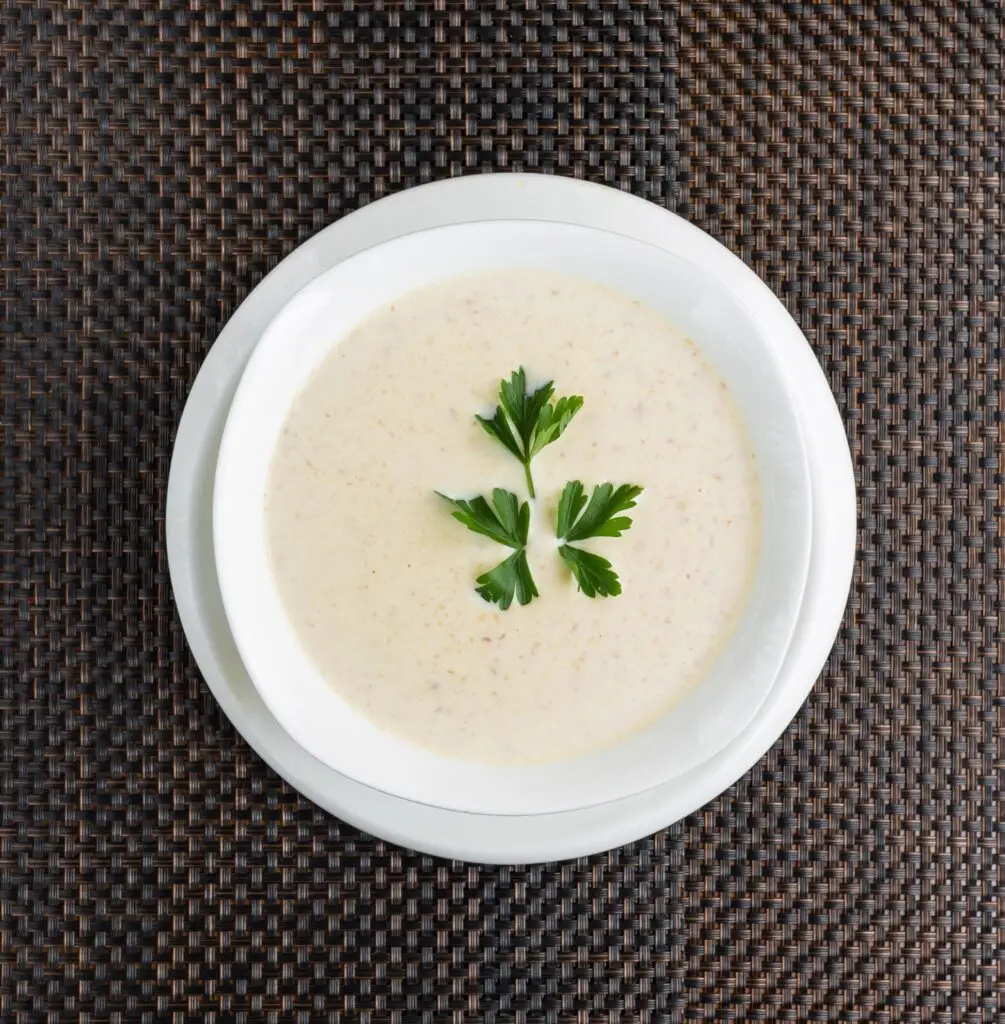Velouté sauce, also known as the “yellow sauce,” is another essential in French cuisine. It's one of the five "mother sauces" and is characterized by its silky, rich texture and subtle flavor, making it an ideal base for countless dishes such as chicken, fish, or even vegetables.
This sauce uses a roux, just like the Bechamel, but instead of milk, we use a light stock—either chicken, fish, or vegetable—to give it that velvety, savory quality. Here’s how you can create this versatile sauce!
Ingredients:
- 2 tablespoons unsalted butter
- 2 tablespoons all-purpose flour
- 1 ½ cups white stock (chicken, fish, or vegetable stock)
- ½ teaspoon salt
- ½ teaspoon white pepper
- A pinch of nutmeg powder (optional)
Step-by-Step Instructions:
1. Make the Roux (Blond Roux):
Just like in Bechamel, the base of Velouté sauce is a roux made from butter and flour. However, in this case, we’ll be cooking the roux longer to create a blond color, which adds a slightly toasted flavor to the sauce.
- Start by melting 2 tablespoons of unsalted butter in a saucepan over low heat. It’s important to keep the heat low to avoid browning too quickly.
- Once the butter is melted, add 2 tablespoons of all-purpose flour. Stir the butter and flour mixture continuously with a whisk or spatula to create a smooth paste.
- Cook this mixture for about 7 minutes over low heat, stirring frequently. You’ll notice the roux slowly turning a light golden or blond color—this is exactly what you want for Velouté sauce. The longer cooking time helps to develop a deeper flavor without darkening the sauce too much.
2. Add the Liquid – White Stock:
Once your blond roux is ready, it’s time to add the liquid, which in this case is a white stock. You can use chicken, fish, or vegetable stock depending on what dish you’re pairing it with.
- Slowly pour in 1 ½ cups of white stock, whisking constantly. Just like with Bechamel, adding the stock slowly while stirring ensures a smooth, lump-free sauce.
- Keep whisking until the sauce starts to thicken, which will take about 5-7 minutes. The consistency should be smooth, velvety, and slightly thinner than Bechamel.
3. Season and Flavor:
Now that your Velouté sauce has thickened, it’s time to add seasoning and enhance its flavor.
- Add ½ teaspoon of salt and ½ teaspoon of white pepper. White pepper is ideal because it blends into the sauce without altering its color.
- For a subtle layer of warmth, sprinkle in a pinch of nutmeg powder. This is optional but recommended if you want to add a hint of spice without overpowering the sauce’s delicate flavor.
4. Adjust Consistency:
If your sauce is too thick, you can thin it out by adding a bit more stock and whisking it in. If it’s too thin, let it simmer for a few extra minutes until it reaches your desired thickness. The final consistency should coat the back of a spoon but not be too heavy.
5. Serve and Enjoy:
Your Velouté sauce is now ready to be used! This sauce pairs beautifully with chicken, seafood, and vegetables, or even as a base for soups and stews. You can also elevate it by turning it into a secondary sauce, such as Sauce Suprême (by adding cream) or Sauce Allemande (by adding egg yolks and cream).
Pro Tips for Perfect Velouté:
- Use Warm Stock: For best results, warm the stock before adding it to the roux. This helps the sauce come together more smoothly.
- Constant Whisking: Keep whisking as you add the stock to prevent any lumps and ensure a silky texture.
- Cook the Roux Carefully: Don’t rush the cooking process for the roux. A slow, even heat allows it to develop flavor without browning too quickly.
Nutritional Information (per serving):
- Calories: 90 kcal
- Fat: 5g
- Carbohydrates: 7g
- Protein: 3g
Velouté is a fundamental sauce that opens the door to many exciting dishes. Whether creating a creamy chicken dish, enhancing a seafood meal, or experimenting with flavors in your kitchen, Velouté is a sauce you’ll want to master!

